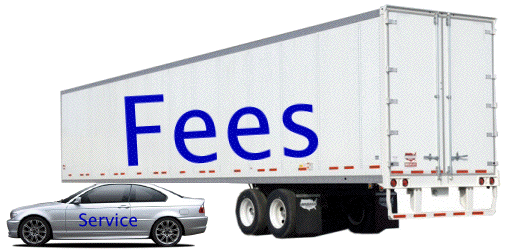Who could have known?
http://www.google.com/hostednews/ap/...19lGwD9CJP9M80
http://www.google.com/hostednews/ap/...19lGwD9CJP9M80
November wholesale inflation up more than expected
By MARTIN CRUTSINGER (AP) – 1 hour ago
WASHINGTON — Inflation at the wholesale level surged in November, reflecting price jumps in energy and other products. The bigger-than-expected increase is certain to raise the attention of Federal Reserve policymakers beginning a two-day meeting on interest rates.
The Fed has been able to keep interest rates at record-low levels to bolster the shaky recovery, but if inflation pressures begin to mount, the central bank could be forced to start raising rates sooner than expected.
Wholesale prices jumped 1.8 percent in November, the Labor Department said Tuesday. That's more than double the 0.8 percent gain analysts expected. Core inflation, which excludes energy and food, rose 0.5 percent, the biggest increase in more than a year.
Over the past 12 months, wholesale prices rose 2.4 percent, the biggest gain over an annual period since October 2008. Wholesale prices had been negative when compared with year-ago levels for 11 straight months.
The November increase followed a 0.3 percent rise in October and was the largest one-month change since August, a gain also driven by energy.
The report on wholesale prices comes on the same day that the Fed was set to begin its final meeting of the year. The absence of inflation pressures due to the recession has allowed the central bank to keep a key interest rate at a record-low for the past year.
The unexpectedly large jump in wholesale prices was not likely to alter the outcome of the Fed's deliberations although it might influence future actions. The Fed was expected to announce on Wednesday that it would again keep a key interest rate between zero and 0.25 percent.
While unemployment dropped slightly in November to 10 percent, from a 26-year high of 10.2 percent, analysts believe it will resume rising in coming months, acting as a further drag on economic growth. The high unemployment levels have kept a lid on prices, as workers afraid of being laid off, have moderated wage demands.
In a recent speech, Fed Chairman Ben Bernanke said that the economy continues to confront "formidable headwinds" as it struggles to mount a sustained recovery.
Wholesale energy prices jumped 6.9 percent in November, the biggest surge since August. Gasoline prices rose 14.2 percent, while the cost of home heating oil jumped 18.3 percent last month.
Still, oil prices have been falling in recent days, hovering around $70 per barrel. That's down from a 2009 high of $82 per barrel hit in October.
Food prices rose 0.5 percent at the wholesale level last month, following a1.6 percent rise in October.
The 0.5 percent rise in core inflation, which excludes food and energy, followed a 0.6 percent drop in October.
A 4.2 percent increase in the cost of light trucks and sport utility vehicles led the gain. The cost of cigarettes rose 2.6 percent.
The Produce Price Index reflects price pressures before they reach the consumer. The government will release its look at consumer prices on Wednesday. Economists believe they will show a more moderate gain of 0.4 percent, with core consumer prices expected to rise 0.1 percent.
By MARTIN CRUTSINGER (AP) – 1 hour ago
WASHINGTON — Inflation at the wholesale level surged in November, reflecting price jumps in energy and other products. The bigger-than-expected increase is certain to raise the attention of Federal Reserve policymakers beginning a two-day meeting on interest rates.
The Fed has been able to keep interest rates at record-low levels to bolster the shaky recovery, but if inflation pressures begin to mount, the central bank could be forced to start raising rates sooner than expected.
Wholesale prices jumped 1.8 percent in November, the Labor Department said Tuesday. That's more than double the 0.8 percent gain analysts expected. Core inflation, which excludes energy and food, rose 0.5 percent, the biggest increase in more than a year.
Over the past 12 months, wholesale prices rose 2.4 percent, the biggest gain over an annual period since October 2008. Wholesale prices had been negative when compared with year-ago levels for 11 straight months.
The November increase followed a 0.3 percent rise in October and was the largest one-month change since August, a gain also driven by energy.
The report on wholesale prices comes on the same day that the Fed was set to begin its final meeting of the year. The absence of inflation pressures due to the recession has allowed the central bank to keep a key interest rate at a record-low for the past year.
The unexpectedly large jump in wholesale prices was not likely to alter the outcome of the Fed's deliberations although it might influence future actions. The Fed was expected to announce on Wednesday that it would again keep a key interest rate between zero and 0.25 percent.
While unemployment dropped slightly in November to 10 percent, from a 26-year high of 10.2 percent, analysts believe it will resume rising in coming months, acting as a further drag on economic growth. The high unemployment levels have kept a lid on prices, as workers afraid of being laid off, have moderated wage demands.
In a recent speech, Fed Chairman Ben Bernanke said that the economy continues to confront "formidable headwinds" as it struggles to mount a sustained recovery.
Wholesale energy prices jumped 6.9 percent in November, the biggest surge since August. Gasoline prices rose 14.2 percent, while the cost of home heating oil jumped 18.3 percent last month.
Still, oil prices have been falling in recent days, hovering around $70 per barrel. That's down from a 2009 high of $82 per barrel hit in October.
Food prices rose 0.5 percent at the wholesale level last month, following a1.6 percent rise in October.
The 0.5 percent rise in core inflation, which excludes food and energy, followed a 0.6 percent drop in October.
A 4.2 percent increase in the cost of light trucks and sport utility vehicles led the gain. The cost of cigarettes rose 2.6 percent.
The Produce Price Index reflects price pressures before they reach the consumer. The government will release its look at consumer prices on Wednesday. Economists believe they will show a more moderate gain of 0.4 percent, with core consumer prices expected to rise 0.1 percent.





Comment